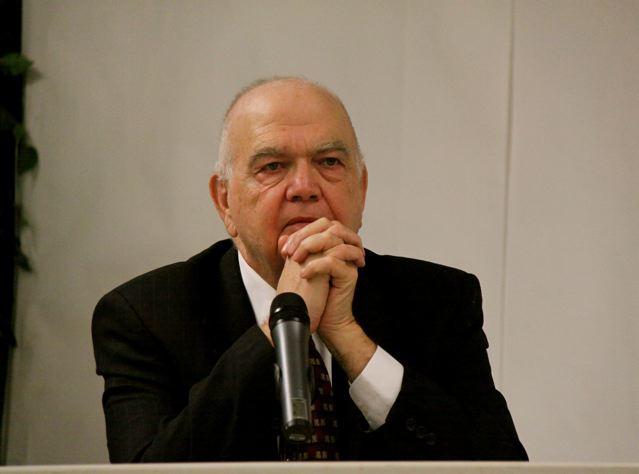
491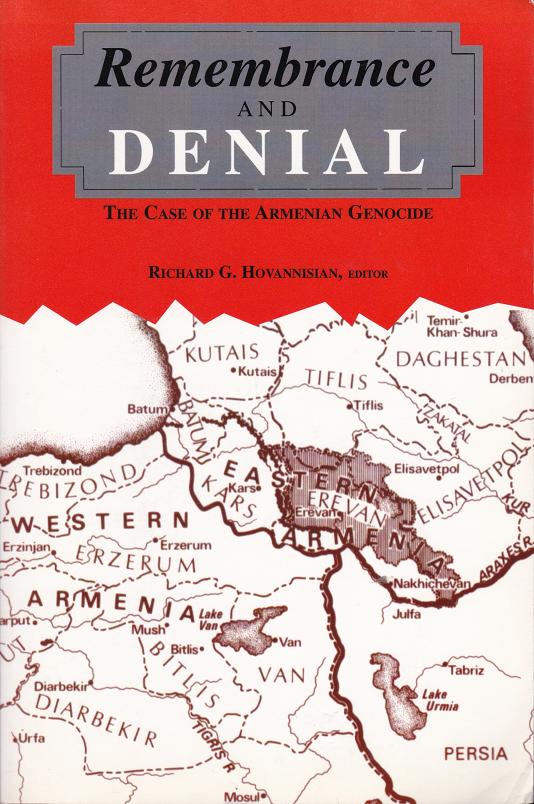 Rangement général
 | | Remembrance and denial |
| Titre : | Remembrance and denial / auteur(s) : Richard G. HOVANNISIAN - The case of the Armenian genocide |
|---|
| Editeur : | Wayne State University Press, Detroit, Michigan |
|---|
| Année : | 1999 |
|---|
| Imprimeur/Fabricant : | USA |
|---|
| Description : | 15 x 22,5 cm, 328 pages, couverture illustrée en couleurs |
|---|
| Collection : | |
|---|
| Notes : | |
|---|
| Autres auteurs : | |
|---|
| Sujets : | |
|---|
| ISBN : | 9780814327777 |
|---|
| Lecture On-line : | non disponible |
|---|
Commentaire :The Armenian Genocide that began in World War I, during the drive to transform the plural Ottoman Empire into a monoethnic Turkey, removed a people from its homeland and erased most evidence of their three-thousand-year-old material and spiritual culture. For the rest of this century, changing world events, calculated silence, and active suppression of memory have overshadowed the initial global outrage and have threatened to make this calamity "the forgotten genocide" of world history. This volume squarely confronts the denial of the Armenian Genocide by the Turkish government, which has expended considerable political and financial resources to repress the facts surrounding this event and even enlisted American and European pseudo-academics to rationalize the issue. Fourteen leading scholars from the United States, Canada, France, England, Germany, and Israel here examine the Armenian Genocide from a variety of perspectives to refute those efforts and show how remembrance and denial have shaped perceptions of the event. Many of the chapters draw on archival records and court proceedings to review the precursors and process of the genocide, examine German complicity, and share the responses of victims, perpetrators, and bystanders. Other contributions consider the impact of the event on Jews before and during the Holocaust; the role of memoirs, oral histories, and literature; the various manifestations of denial; and the contest between remembrance and denial in the academic arena.
Contents Contributors 9
Introduction: The Armenian Genocide, Remembrance and Denial, RICHARD G. HOVANNISIAN 13
1 Modern Turkish Identity and the Armenian Genocide, From Prejudice to Racist Nationalism, STEPHAN H. ASTOURIAN 23
2 The Archivai Trail, Authentication of The Treatment of Armenians in the Ottoman Empire, 1915-16, ARA SARAFIAN 51
3 The Baghdad Railway and the Armenian Genocide, 1915-1916, A Case Study in German Resistance and Complicity, HILMAR KAISER 67
4 Finishing the Genocide, Cleansing Turkey of Armenian Survivors, 1920-1923, LEVON MARASHLIAN 113
5 The Forty Days of Musa Dagh, Its Impact on Jewish Youth in Palestine and Europe, YAIR AURON 147
6 Survivor Memoirs of the Armenian Genocide as Cultural History, LORNE SHIRINIAN 165
7 Problematic Aspects of Reading Genocide Literature, A Search for a Guideline or a Canon, RUBINA PEROOMIAN 175
8 The Role of Historical Memory in Interpreting Events in the Republic of Armenia, DONALD E. MILLER 187
9 Denial of the Armenian Genocide in Comparison with Holocaust Denial, RICHARD G. HOVANNISIAN 201
10 Freedom and Responsibility of the Historian, The "Lewis Affair", YVES TERNON 237
11 The Truth of the Facts About the New Revisionism, MARC NICHANIAN 249
12 Professional Ethics and the Denial of the Armenian Genocide, ROGER W. SMITH, ERIC MARKUSEN, AND ROBERT JAY LIFTON 271
Works Cited 297
Index 317 |
93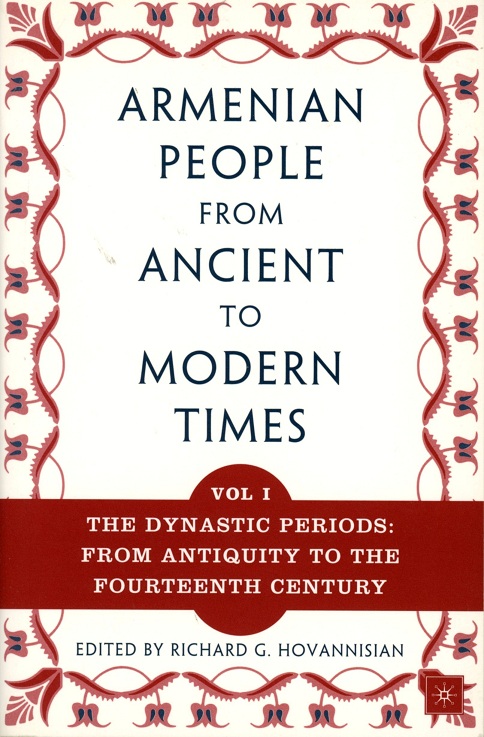 Rangement général
 | | Armenian people from ancient to modern times |
| Titre : | Armenian people from ancient to modern times / auteur(s) : Richard G. HOVANNISIAN - Vol. 1, The dynastic periods from antiquity to fourteenth century |
|---|
| Editeur : | St Martin Press, New York |
|---|
| Année : | 1997 |
|---|
| Imprimeur/Fabricant : | Acme Art |
|---|
| Description : | 14 x21 cm, 372 pages, couverture illustrée en couleurs |
|---|
| Collection : | |
|---|
| Notes : | |
|---|
| Autres auteurs : | |
|---|
| Sujets : | History of Armenia |
|---|
| ISBN : | 9781403964212 |
|---|
| Lecture On-line : | non disponible |
|---|
Commentaire :Edited by the leading of the Republic of Armenia, this is the definitive history of .an extraordinary country—from its earliest foundations through the Crusades, the resistance to Ottoman and Tsarist rule, the collapse of the independent state, its brief reemergence after World War I, its subjugation by the Bolsheviks, and the establishment of the new Republic in 1991. Written by the foremost experts on each period in Armenia's history, these volumes are a major contribution to understanding the complexities of Transcaucasia.
Armenia is a cradle of civilization situated on one of the world's most turbulent crossroads. This volume examines the question of Armenian origins, traces Armenian domestic and international relations, society, and culture through the dynastic periods, spanning nearly two thousand years, and shows how the adoption of Christianity had a permanent impact on the course of Armenian history and culture. During these heroic, colorful, and harsh feudal centuries, Armenia struggled to maintain as much freedom as possible under the shadow of powerful neighboring empires. |
225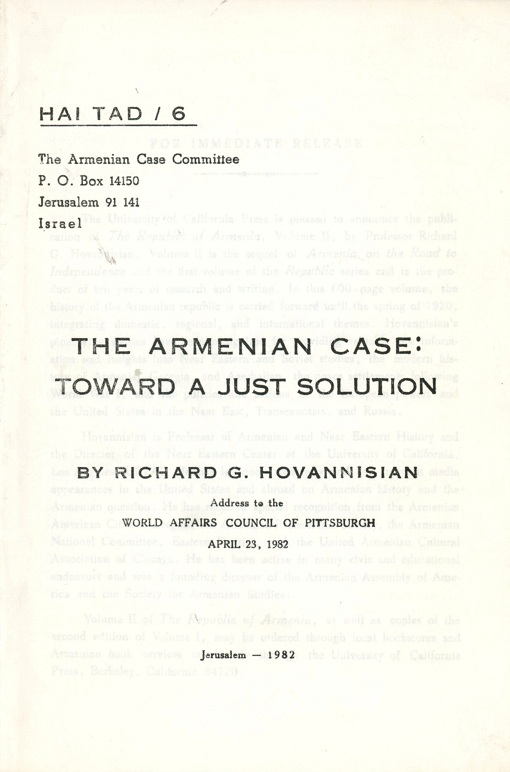 Rangement général
 | | The Armenian case : towards a just solution |
| Titre : | The Armenian case : towards a just solution / auteur(s) : Richard G. HOVANNISIAN - Address to the World Affairs Council of Pittsburgh, April 25, 1982 |
|---|
| Editeur : | The Armenian case Committee |
|---|
| Année : | 1982 |
|---|
| Imprimeur/Fabricant : | Jerusalem |
|---|
| Description : | 15 x 22 cm, 22 pages |
|---|
| Collection : | |
|---|
| Notes : | |
|---|
| Autres auteurs : | |
|---|
| Sujets : | Armenian genocide |
|---|
| ISBN : | |
|---|
| Lecture On-line : | non disponible |
|---|
Commentaire : |
94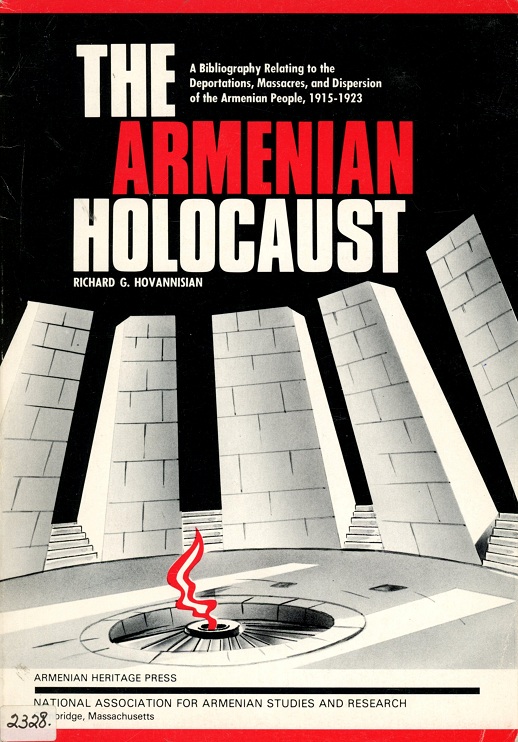 Rangement général
 | | The Armenian holocaust |
| Titre : | The Armenian holocaust / auteur(s) : Richard G. HOVANNISIAN - A bibliography relating to the deportations, massacers, and dispersion of the Armenian people, 1915-1923 |
|---|
| Editeur : | NASSR |
|---|
| Année : | 1978 |
|---|
| Imprimeur/Fabricant : | Colonial Printing, Walden, Ma |
|---|
| Description : | 18 x 25,5 cm, 44 pages, couverture illustrée en couleurs |
|---|
| Collection : | |
|---|
| Notes : | Second, revised printing 1980 |
|---|
| Autres auteurs : | |
|---|
| Sujets : | Armenian genocide |
|---|
| ISBN : | |
|---|
| Lecture On-line : | non disponible |
|---|
Commentaire :FOREWORDThis meticulously researched book undoubtedly represents a labor of love, emanating from a determination that the record must be preserved of a virtually forgotten experience that almost wiped out the Armenian nation, one of the kindliest and most talented peoples in history. There can be no drama in a catalogue, no emotional fervor, not even in an introduction that, considering the subject matter, is astonishingly low-keyed. This work is meant as resource material, and it lists volumes and documents drawn from many libraries here and abroad, public and private, in many languages. It concentrates upon the events of the 1915 massacres and dispersion of the Armenian people who had been living precariously in the Turkish empire and were regarded with malevolent suspicion as a likely enemy. The fear was never absent that, if war broke out between Russia and Turkey, the Armenians - whose historical roots lay in both empires - would be drawn into it.
When the dreaded world war did come, the Turks, more vulnerable to Russian conquest, decided to eliminate any danger of subversion by the mass destruction of the hundreds of thousands of Armenians who were in their jurisdiction or could be quickly engulfed. The Turkish objective was so efficiently fulfilled that it compelled the creation of a new word to describe it, genocide - the systematic destruction of a whole people. The massacres were accomplished with more thoroughness than earlier mass butcheries such as those of Atilla and Tamerlane, for they combined the savagery of the barbarian with the sophisticated murder techniques of the twentieth century. They even added a note of macabre effrontery. The Turkish Prime Minister Talaat asked the American Ambassador for a list of Armenians who had been insured by American firms, for both the holders and the beneficiaries had been killed, and thus, by Turkish law, the Turkish government was entitled to the residuary insurance estates!
There was little question about the authenticity of the massacres, and they could not be dismissed as atrocity war propaganda. They were validated by authorities with the international standing of the American Ambassador, Henry Morgenthau, and the distinguished British statesman, Lord Bryce. Yet after the first flurries of incredulity that the twentieth century could spawn such inhumanity, ironically the entire experience was simply absorbed in the overall casualties where many more millions died in battle.
A deeply saddened Armenian asked with understandable bitterness: "While the Jews had their Nuremberg, and the Asiatic nations had their Tokyo, where is the international tribunal that will hear, at long last, the Armenian complaint against Turkey, for the 'Mother' genocide of 1915-21?" Little wonder that at a later time, when Hitler made ready for the Final Solution, the mass destruction of more than ten million human beings, six million of them Jews, more than a third of an entire people, he could say with confidence that there would be no more than a temporary ferment of indignation. In the Nuremberg trial records, one of the members of the Death Head units reported that Hitler's order to kill without pity or mercy was concluded with the observation, "who still talks nowadays of the extermination of the Armenians?"
Yet, as one reviews the genocide of the Armenians, it is surely not enough to attribute the tragedy to the brutality of Turks or Nazis or totalitarian fanatics to whom human life means no more than the nuisance of the survival of insects. Surely heavy responsibility, too, must be shared by the by-standers, the rhetoricians whose compassion goes little farther than sanctimonious platitudes uttered in the safety of the fellowship of the technically virtuous. For they were clucking piously: "Poor things, their tragedy is a blot on our civilization. But we do not want to get involved." How many crimes of our century have gone unpunished, even sloughed off, by the exculpatory phrase. "We do not want to get involved." Alexander Pope wrote long ago:
Vice is a monster of so frightful mien, As to be hated, needs but to be seen; Yet seen too oft, familiar with her face, We first endure, then pity, then embrace.
One of Dr. Hovannisian's motivations in giving so much precious research time to the gathering of a bibliography must have been to accuse this fellowship of the unconcerned of its share in the guilt of the butchers. They were not asked to fight. They were not asked to risk life or limb. They needed only to keep the story of the horror alive, to protest it vigorously and tenaciously. When the war ended and a more civilized perspective could emerge, there were endless opportunities to speak up, to make sure that later Hitlers would be unable to say "who still talks nowadays of the Armenian extermination?", as the assurance that he could launch an even more horrible one with impunity.
Dr. Hovannisian's bibliography is a definitive listing of the sources for the scholar or reader who wishes to revive the story of the Armenian massacres, draw lessons from any portion of it, and/or perpetuate the Armenian claims to their ancestral homeland. The bibliography now prepares the way for what must follow, and it is to be hoped the task will not be too long delayed. The world must know that the horrifying tale of the atrocities of 1915 and after does not complete the Armenian contribution to the history of the western world. There is a magnificent story that remains to be told, not only for the general reader, but for the Armenians themselves, especially their young people. There is a saga to be developed, with love and imagination, of who they are, their glorious history for many centuries before Christianity, what they have meant since the days when they became the first Christian nation in history, their positive contributions to world civilization, their corporate influence as a people and, as individuals, through the most talented and creative sons and daughters.
There are already a few monographs of limited periods, and some scholarly studies that light up some dark corners. Several general histories have appeared, but without the benefit of resort to sources that Dr. Hovannisian has compiled. An overview history, where popularization is not vulgarization, where drama and pride are rooted in fact, is now necessary, especially in a period when so many ethnic groups are exploring their roots and rediscovering their identity. Dr. Hovannisian's bibliography will be invaluable as a divining rod to seek out the lodes where so much precious ore has waited too long for release.
ABRAM L. SACHAR Chancellor Brandeis University
Waltham, Massachusetts March 10, 1978 |
|
